Workshop on “Physical and Wearable Computing”: projects and outcomes
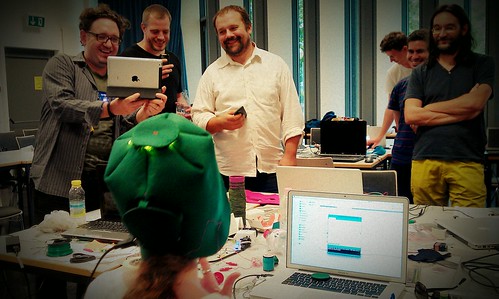


[Via: homepage of the workshop and Zoe Romano's blog]



[Via: homepage of the workshop and Zoe Romano's blog]


[Via: The Naked Espresso]
Variations II of Variations II is a kinetic sculpture inspired by John Cage’s Variations series.
Cage’s Variations II is a graphical composition that generates musical events using measurements of distance between dots and lines on a piece of paper.
The instructions for the piece determine the behavior of rotating panels and images synchronized to be projected onto the sculpture. Motors drive the rotation of the panels, and are used as a sound source for the audio portion of this piece.

The artist Jay Kim has used C/C++, Arduino, MaxMSP/Jitter and some stepper motor to create his sculpture.
Watch the video.
Via:[Synthopia]
In an article on the New York Times Nick Bilton report us an impressive sentence pronounced by Paola Antonelli, senior curator in the Department of Architecture and Design at the Museum of Modern Art. She said: “The two most important introductions for art in the past 20 years have been the Arduino and Processing”.
Not all art projects we come across have precisely the characteristics of avant-garde art, but many are able to attract our attention and at least snatch us a smile.
That’s the case of “Crush Limbaugh”.
The ultra-conservative book organ includes the autobiography of Sarah Palin, a thriller by Glenn Beck, the memoirs of Dan Quayle and a book-length rant by Rush Limbaugh, each repurposed into electronic triggers hooked up to a central Arduino microcontroller. The Arduino is programmed with a music-generating algorithm, and each hit of a book triggers a single note, or some other type of instruction within the program. Toccata for ultra-conservative book organ (“Crush Limbaugh”) is the name of both the program which generates the music and the interactive, semi-improvisational performance on this instrument.
The performers are Sangbong Nam, Charles Peck, and Benjamin Martinson.
 “On Journalism #2 Typewriter” is a typewriter installation of Julian Koschwitz, which purpouse is to remember journalists who got killed in the past 20 years. The installation writes generative stories about all journalist who have been killed worldwide between 1992 and today based on the existing data on their life as well as their published work. The individual stories are connected through common fields of coverage, places, professions and the story is written endlessly on one endless piece of paper.Besides the text the typewriter creates flags which are distorted the more journalists got killed in that particular country.
“On Journalism #2 Typewriter” is a typewriter installation of Julian Koschwitz, which purpouse is to remember journalists who got killed in the past 20 years. The installation writes generative stories about all journalist who have been killed worldwide between 1992 and today based on the existing data on their life as well as their published work. The individual stories are connected through common fields of coverage, places, professions and the story is written endlessly on one endless piece of paper.Besides the text the typewriter creates flags which are distorted the more journalists got killed in that particular country.
The installation makes use of Arduino Nano, Arduino and Processing software, 32 solenoids and shift-registers.
For more information: http://koschwitz.org/studio/?page_id=627

Social Jukebox is an Arduino-powered music player tailored to allow music sharing through tangible interaction. The device, based on wooden tokens, has the aim of bring back the physical aspect of music sharing and allow multi-user listening in a social environment. The tokens have RFID chips embedded in them, so the music player can read the link to a Spotify song. The device randomly selects tokens and tracks as it goes, creating a real-life, listening experience.
For more information : http://interaction.dundee.ac.uk/~apairman/wordpress/

“Years” is an artwork created by Bartholomäus Traubeck that translates wood’s year rings into sound. The record player uses a system that analyse tree’s years for their strength, thickness and rate of growth. This data are mapped to a scale defined by the overall appearance of the wood and serves as basis for a generative process that outputs piano music. The system is composed by arduino, ps eye, stepper motor for moving the tonearm, vvvv and ableton live, all connected via midiyoke and/or serial.
For more information: http://traubeck.com/years/
Change is good! And a new style of clothing always helps! SO here we are with a sexy new packages for the new Arduinos. View and enjoy! ![]()

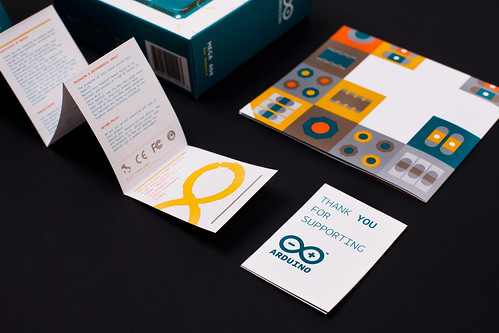


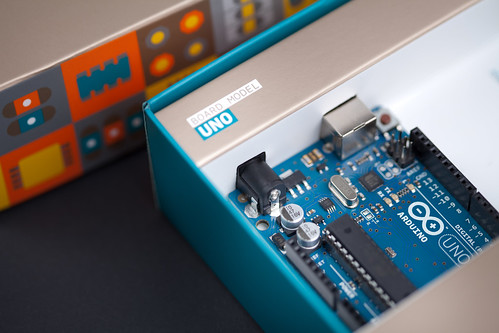
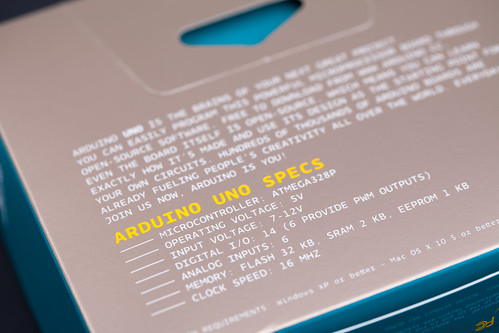

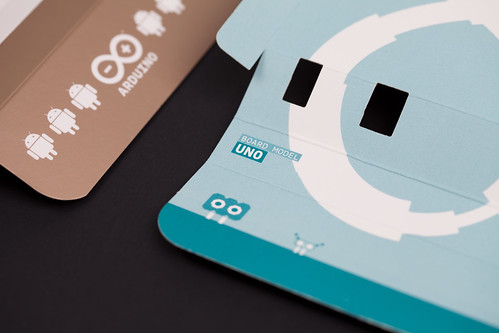




Via:[Boingboing.net]
Everyday, a lot of spam inevitably arrives to our mailboxes, forcing us to lose time in discerning fake emails from good ones, so everyone agrees on saying that spam is frustrating and completely useless.
This is almost true, since Varvara Guljajeva and Mar Canet Sola have taken advantage of spam coming from the Internet (more specifically, those messages “donated” by Eindhoven people) to make a very creative art project: first, they have recycled spam to algoritmically create poetry and, then, they have sent the result to a properly Arduino-hacked knitting machine (Arduino has been used to emulate the typing of the commands required to load the pattern).
From the authors:
Concerning the concept, we are interested in bringing together digital culture and traditional handicraft. To be more specific, the idea is to experiment with the form and meaning of SPAM. We turn SPAM into a romantic, funny or even sarcastic poetry and present it in unusual tangible form as knitted garment. To be more specific, we call final result dysfunctional wearable, because it reminds a sweater but is not really a one. Like SPAM, our dysfunctional wearable does not have a purpose.
The result is really impressive and it has been presented at two exhibitions, at Eindhoven and Malmö. Several pictures of the events can be found here. More information about the project can be found at Mar and Varvara‘s homepages.
[Via: Mar's Homepage and Varvara's Homepage]